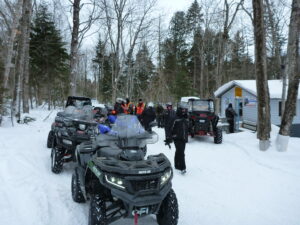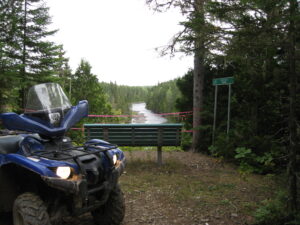
In 10 years, from 1993 to 2004:
The number of registered ATVs has more than doubled, going from 128,901 to 294,706, adding more than 165,805 vehicles, which converts to a 116% increase.
With its 109 clubs and more than 50,000 FQCQ (Fédération Québécoise des Clubs Quads) members throughout the territory, Quebec has a unique structure and operating framework.
It is estimated that over 440,000 vehicles are registered in Quebec. Quad biking can be practiced in winter as well as the rest of the year, on club-groomed trails.

The number of registered ATVs has more than doubled, going from 128,901 to 294,706, adding more than 165,805 vehicles, which converts to a 116% increase.
Clubs affiliated to the FQCQ offer more than 30,000 km of trails, of which 13,000 km are available in winter only, 19,000 km during the summer.
Listing of regions offering year-round access to the trails:
Summer trail Access :
Desired aspects sought by quad drivers:
Snow conditions in the winter and vast natural expanses easily accessible via trail networks, making it even more important to rely on field crews composed of local clubs, overseen by a strong and representative provincial organization.
Spending associated with ATVing is estimated at around $1.5G. Economic fallouts benefit regions where the economy is less diversified.
